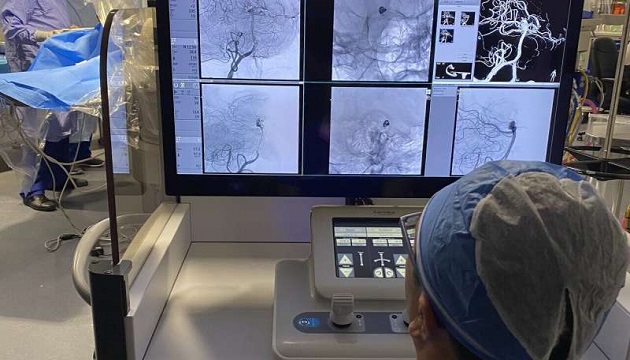Robotic technology is used in surgery and cardiology, but not for brain vascular procedures. In this study, Canadian researchers report the results of the first robotic brain vascular procedures. They used a robotic system specifically adapted for neurovascular procedures. Software and hardware adaptations enable it to accommodate microcatheters, guidewires and the other devices used for endovascular procedures in the brain. These modifications also provide the operator additional precise fine-motor control compared to previous system models.
Using a robot to treat brain aneurysms is feasible and could allow for improved precision when placing stents, coils and other devices, according to late breaking science presented today at the American Stroke Association’s International Stroke Conference 2020. The conference, Feb. 19-21 in Los Angeles, is a world premier meeting for researchers and clinicians dedicated to the science of stroke and brain health.
This experience is the first step towards achieving ther vision of remote neurovascular procedures. The ability to robotically perform intracranial aneurysm treatment is a major step forward in neuro-endovascular intervention.”
All intracranial steps were performed with the robotic arm. Since this first case, the team has successfully performed five additional aneurysm treatments using the robot, which included deploying various devices such as flow-diverting stents.
The expectation is that future robotic systems will be able to be controlled remotely. For example, I could be at my hospital and deliver therapy to a patient hundreds or even thousands of kilometres away. The ability to deliver rapid care through remote robotics for time-critical procedures such as stroke could have a huge impact on improving patient outcomes and allow us to deliver cutting-edge care to patients everywhere, regardless of geography.
“Our experience, and that of future operators of this technology, will help develop the workflows and processes necessary to implement successful robotic programs, which will ultimately help establish remote care networks in the future,” Mendes Pereira said.

